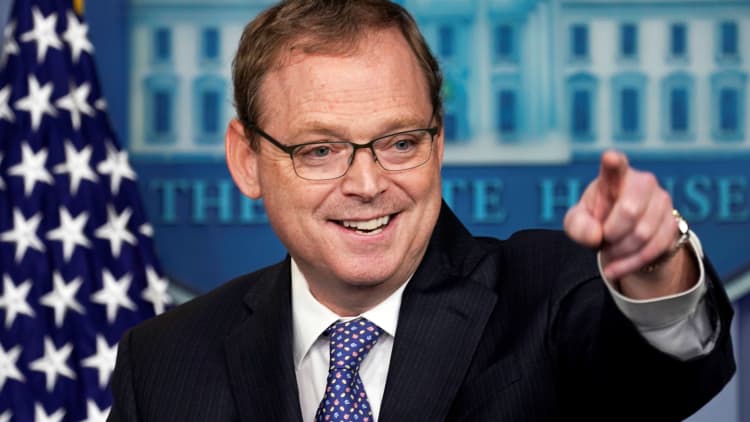
The trade deficit between the U.S. and its global partners dropped sharply in January to $51.15 billion as exports rebounded from a slowdown at the end of 2018, the Commerce Department reported Wednesday.
Economists surveyed by Dow Jones had forecast that the balance fell to $57 billion in January, from the $59.9 billion recorded the previous month.
The decline of 14.6 percent represented the sharpest drop since March 2018 and comes amid continued efforts by the Trump administration to level the playing field with China and other global partners.
Exports rose to $207.3 billion, a $1.9 billion increase from December, while imports fell to $258.5 billion, off $6.8 billion. The goods deficit dropped 10 percent to $73.3 billion while the services surplus edged higher to $22.1 billion.
"The sharp fall in the trade deficit in January was primarily due to a larger than expected fall in imports, which is hardly a positive sign for the economy," Michael Pearce, senior U.S. economist at Capital Economics, said in a note. "Nonetheless, with imports now likely to have been flat, or fallen slightly, in the first quarter overall, net trade is likely to be a positive for economic growth in the first quarter."
Following the trade report, the Atlanta Federal Reserve raised its estimate of first-quarter GDP to 1.5 percent. The estimate had been as low as 0.2 percent on March 12.
China specifically represented a good chunk of the reduction in the trade balance shortfall, as the deficit decreased $5.5 billion to $33.2 billion as imports fell 12.2 percent to $40.8 billion. The two nations have been involved in a tit-for-tat tariff battle as officials try to work out a long-range framework that opens up markets for U.S. goods.
Treasury Secretary Steven Mnuchin and U.S. Trade Representative Robert Lighthizer will begin additional negotiations with Chinese officials Thursday. The White House in 2018 slapped tariffs on $250 billion worth of imports from China, which retaliated with levies on $110 billion worth of American products.
In addition to the shift on China, the balance with Canada went from a deficit of $700 million to a surplus of $1.4 billion, though the shortfall with South Korea increased to $2.4 billion from $1.7 billion.
At a product level, exports of soybeans increased by $900 million, passenger cars rose by $700 million and aircraft fell by $1.3 billion.



